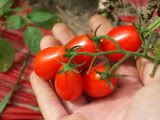
Roses have long been a favorite of flower lovers, going as far back as the ancient Egyptians. Roses were once considered disease-ridden, one-shot wonders to floriferous denizens. The earliest roses usually bloomed only once a year, but they gave off wonderful aromas. Old-fashioned roses can grow into large, thorny bushes, more vigorous than a modern hybrid tea rose.
Classic Old-Fashioned Roses
Select these classic roses if you want a more formal garden.
- Alba roses: Semi Plena, Konigin von Danemark
- Bourbon roses: Louise Odier, Variegata de Bologna, Madame Isaac Pereire, Honorine de Brabant Centrifolia roses: De Meaux
- Damask roses: Madame Hardy, Comte de Chambord, Celsiana
- Gallica roses: Rossa gallica officinalis, Cardinal de Richelieu
- Moss roses: Mundi, Empress Josephine
Napoleon's wife, Empress Josephine, surrounded her palace with every variety of rose. In the early 1800s, reblooming roses from China were discovered and interbred with old-fashioned European roses to extend their bloom period. These hybrids had fewer thorns and petals but rebloomed through the summer. Breeding efforts focused on improving flower form and expanding color selection. The results were grandifloras, hybrid teas, and other long-blooming plants that required high maintenance.
Traditional rose gardens are rather formal affairs. The beds are often laid out in geometric patterns, with tree roses at each corner and an arbor of climbing roses at the center or rear. Your home rose garden doesn't have to be quite so static. As long as proper planting distances are respected, the rose garden can take on any appearance from a near-formal style to a flowing island with an irregular outline. The only rule that really should be followed is that taller plants should go in the center or rear of the bed.
Purists grow only roses in a rose garden. Gardeners with less stringent ideas can introduce spring-flowering bulbs, noninvasive perennials, low-growing annuals, or other plants. The upkeep of these other plants should not damage the roses they are designed to set off. If you're really adventurous, you can develop an entire garden of roses in individual containers on a patio or balcony.
Although roses are quite specific in their needs, you can find a place for them with a little searching in just about any yard. The first requirement is plenty of sun: six hours or more a day if possible. Some roses will do well with less. Early morning sun is better than late afternoon sun since the flowers last longer under cooler conditions.
Now, roses will adapt to most moderately fertile soils, even sandy ones. Just make sure you work in plenty of organic matter: compost, well-rotted manure, etc. Test the soil for pH before planting. Roses prefer a pH of 6.5 to 6.8, although they will tolerate levels from 6.0 to 7.5. Any soil that is extremely acid or alkaline should be corrected by adding, respectively, lime or powdered sulphur.
Good drainage is essential in the rose garden. If your soil is constantly damp, consider either adding drainage tiles or raising the bed 8 to 10 inches above ground level. Soil that drains too well can be improved by adding organic material and through careful irrigation. In well-drained soil, you can plant the rose deeper than in heavy soil, covering the graft with insulating soil. In cold climates, the graft union should be planted 2 to 3 inches below the soil line.
Proper placement is also essential for a successful rose garden. Avoid areas near large trees and shrubs, since roses are intolerant of root competition. A certain amount of air circulation is beneficial, so avoid low-lying pockets. Windy spots can be moderated by using a windbreak. In cold climates, planting on a slight slope will help prevent damage from a late spring frost.
Bare-root or packaged roses are best planted in spring after all danger of frost has passed. In the deep South, the cooler winter months are the ideal planting time. Container-grown roses can theoretically be planted any time during the growing season. Avoid planting during the dry, hot summer months.
Source:
http://tlc.howstuffworks.com/home/how-to-grow-a-specialty-garden3.htmThis picture taken from: www.thegardencentral.com






